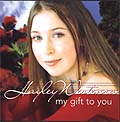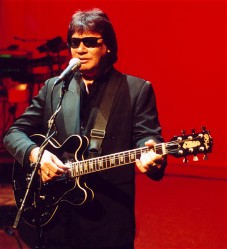Rock from the Edge (4)
By Keith Newman (Copyright
2002-2004)
Creative Kiwis
with export success
Who else crossed over, movie soundtrack writers or artists who got their songs in the movies
May not go into book but would be good for the record
I need to know about Kiwi international rock, jazz, country success, particularly in the 60s and 70s so we get the record straight. I think it's going to be difficult to track the future. It's going to be amazing. This is my effort to archived the pioneer. Help me by submitting information, making corrections, supply pictures wordman@wordworx.co.nz )

You might even consider Russell Crowe a musical success having started with his own band aged 16-years and under the stage name Russ le Roq recorded several songs, including the prophetic I Want To Be Like Marlon Brando. He continues to work with Australian unit 30 Odd Foot of Grunts (TOFOG) which has played the US and UK circuit to some acclaim for a number of years. Of course he’s better known as an internationally successful actor having starred in more than 20 movies. If we were to list our contemporary successes in that field it would fill a book on its own and go back to pre-Blerta days. Geoff Murphy played trumpet and co-wrote the Kiwi classic Dance All Around the World with Corben Simpson and collaborated with Bruno Lawrence on all manner of movie experiments before achieving acclaim with Wild Man (1977), Goodbye Pork Pie (1980), Utu (1983) and the Quiet Earth (1986).
In classical music we’ve also made it big on the international stage. Inia Te Wiata, Kiri Te Kanawa, Dame Melvina Major and Hayley Westenra and Deborah Wai Kopohe are all known on the world stage.

Hayley Westenra however remains one of New Zealand best selling artists locally and internationally. She featured in a best of New Zealand tour to the US in 1993 which played to full houses in large concert venues and also starred Ben Morrison, Tim Beveridge, Gray Bartlett, Brendan Dugan and Taisha.
It was announced in
January 2004 that 16-year old Westenra had sold one million
copies of her album Pure worldwide. The last artist to sell a
million was OMC in 1996. Pure released in September 2003 became the best
selling debut album in the history of British classical charts. She is
also the New Zealand Top 50 chart record holder for having the number
one album for 15 weeks and had sold about 150,000 copies. Here album was
released in the US in March.
US-based Kiwi Keith Urban won Best New Male Performer at the
American Country Music Awards in Nashville in May 2001. He also scored a
number one record on the influential American Radio and Records chart
in October 2002. Urban who has worked with Garth Brooks and the Dixie
Chicks moved to Australia when he was six now lives in Nashville.
In
country music Tex Morton was the ultimate pioneer attaining a
strong following in Australia and North America during the
1950’s. He was a recording star, singer-songwriter, circus
entrepreneur comic book author, Hollywood screen actor and
hypnotherapist.
John Hore toured Australia in 1964 for a round of night clubs, hotel and TV appearances. The Top Twins have a strong following in Australia and London. Gray Bartlett (MBE) however is New Zealand’s top selling instrumentalist having achieved a number two spot on the Japanese charts in the late 1960s and accumulated significant sales in China and Australia since then.
The Convairs were apparently in the UK in the mid sixties, the Folkestone Three (known as the Harbour Lites in the UK) went to the there in 64.
Eddie Low has been writing and recording as well as touring for over 40 years. The former member of the Quintikis Showband, which toured extensively throughout New Zealand in the 1960s, toured as a solo act with Howard Morrison, John Hore, Paul Walden and Peter Posa. From 1970 he began getting work outside New Zealand including Fiji. The blind performer was invited by the Country Music Association of America to take part in the Grand Ole Opry birthday celebrations held in Nashville and recorded at RCA Studios in Nashville He toured Canada and US several times to support his singles. In the late 70s he moved to Australia where he regularly appears on the club scene and on radio and TV.
 Michael Scorey
is billed in the UK as ‘New Zealand's Billy Bragg’, a ‘wandering
minstrel’ and a ‘street poet’. His album Angel Station
made the finals of the NZ Music Awards in the Folk Category in 2002.
Michael Scorey
is billed in the UK as ‘New Zealand's Billy Bragg’, a ‘wandering
minstrel’ and a ‘street poet’. His album Angel Station
made the finals of the NZ Music Awards in the Folk Category in 2002.Country
performer Glen Moffatt has regularly toured offshore and spent considerable time
impressing the Australians and his music has received high rotate
airplay on a number of stations there. Former Kiwi country recording
star Noel Parlane
is now living and working in Brisbane.
Singer, songwriter and multi instrumentalist Wayne
Roland Brown has collected over 130 musical instruments from 32
countries. He has been assimilated into Australia and US. His song Essential
Sensual was included on the soundtrack for the movie Cocktail
and he appeared on a CD collaboration with Australia’s instrumental
group Tone Patrol in 1987.
New Zealander and Nashville
favorite, Kylie Harris has performed at the Grand Ole Opry and
shared the stage with Kenny Rogers, Ricky Skaggs, The Irish Rovers and
Charley Pride.
The most widely appropriated song from New
Zealand may be Farewell
to the Gold
by Paul Metsers
which was performed on a number of albums and picked up by Bob Dylan
(bootleg 1991 Himself) and performed as The Miners Song at
Youngstown Ohio, in Nov 1992.
Kiwi icons
the Topp Twins. have toured internationally since 1987 and
received rave reviews for their shows in Australia, Britain, Canada and
the US. Their distinctive brand of entertainment has attracted
something of a cult following through their appearances at folk music
festivals in Canada, fringe theatre festivals in Edinburgh and Adelaide,
comedy festivals in Montreal and Melbourne, the Sydney Gay & Lesbian
Mardi Gras, and just about every major country music festival in
Australia. In fact the Topp Twins have become one of Australia’s most
popular country music acts.
Back to
Kiwis in Australia & the US
So what does it all mean?
There’s something about living in New Zealand that brings out the best in creative people. Perhaps its being on the literal edge of the world that makes us feel like we have to prove ourselves, to make do with what we have and turn it into something that others need or want.
If we’d begun to recognise musicians and songwriters forty years ago as being part of a legitimate industry worthy of building up and managing we could by now be reaping billions of dollars in export earnings from international success.
Being successful in the New Zealand music
business however, remains a do-it-yourself affair unless you are one of
the fortunate few to achieve high radio and television exposure and have
a record company that believes in your export potential.
Many who venture out on their own are faced with few suitable venues,
record and management deals that leave them in debt and a less than
cordial reception from the major radio networks. The consequence for the
would-be pop or rock star is often financial crisis, disappointment and
burn out. Many are forced to quit their dreams and ‘get a real job’.
We’re not very comfortable blowing our own trumpet, banging our own
drum or telling the world or even each other that we’re good at what
we do. There’s a place for genuine humility but no marketing or
advertising agency or even record company would recommend those
qualities if trying to sell our music offshore.
Despite being up against the world and "market forces", we know it’s up to us to affirm that we have what it takes, because no-one’s going to hand it to us on a plate. We know that we have a heritage, a legacy of beating the odds, an instinct for survival.
New Zealand has done exceptionally well considering its tiny 3.8 million population. It has produced the kind of determination that conquers the highest mountains (Sir Edmond Hillary, Everest, 1953) and helped split the atom (Sir Ernest Rutherford) and a heritage of musical and artistic talent that is now accepted as being of global quality.
Our musical
talents have filled auditoriums with their sheer vocal presence
(Dame Kiri Te Kanawa, Inia Te Wiata, Dame Melvina Major, Hayley
Westenra, Deborah Wai Kopohe) and unique brand of pop music (Split Enz,
Crowded House, Dragon, Hello Sailor, Fur Patrol, Zed, Chris Knox). Those
acts were simply the groundbreakers to open the way for the world to
realise Kiwi creativity is alive and well and will not be subordinate to
the tall poppy syndrome or any other form of dumbing down. Unless
the answer to a 2002 Metro quip
“can you have the tall poppy syndrome and still be a wilting
violet?” is in the affirmative.
There’s no doubting the evidence New Zealanders for the size of the place have done bloody well on the international scene.
Europe, the UK and the rest of the world need genuine, honest creativity in the midst of the regurgitated hits of the past and the fluff and crassness that passes for pop in many parts of the. New Zealand by contrast has something down to earth, honest and passionate, which has already proven itself over decades and remains a relatively untapped export industry.
In December 2003 New Zealand artists accounted for six of the top 10
albums and 15 of the top 50. Hayley Westenra, Scribe, Brooke Frazer, Bic
Runga, the feelers and Elemeno P all rated. This has been the strongest
showing of Kiwi music for many years. New Zealanders are also continuing
to appear all around the world and are coming to international
recognition through their recording and performing successes.
While this
document largely focuses on those who made an impression in the earlier
decades I have tried to keep it up to date as modern day artists
continue to prove that Kiwis can fly. all contributions gratefully
received and published.
The best talent will continue to export itself with no financial
return to this nation unless we formalise the means to get behind the
industry and have artists establish their financial base here. It’s
time to be prepared, get CVs up to date, make sure our musical heritage
is in a digital format with the copyrights secured and the stage act
well rehearsed and rearing to go when the new breed of A&R managers
come calling.
![]() Back to Rock Exports
intro
Back to Rock Exports
intro
Bruce Sergent's thorough site of Kiwi rock: http://www.sergent.com.au/
(Ray Columbus, Peter Posa and Max Merritt photos from Bruce's site)
The Kiwi Edge: http://www.nzedge.com/
Kimball Duncan’s pages on the Australasian rock scene http://www.milesago.com
Oldies website: http://www.oldies.com
Andrew Schmidt: http://www.ugly-things.com
Stranded in Paradise (John Dix)
Hostage to The Beat (Roger Watkins) 1995
When Rock Got Rolling (Roger Watkins) 1989
Endless research and interviews by Keith Newman.
Photographs: Ricky May, Frank Gibson Jnr, Mike Nock, Shona Laing and Billy TK by Keith Newman
Individuals who’ve helped with key information so far:
Maurice Greer,
Suzanne Lynch, Dalvanius Prime, Phil Yule, Ray Columbus, Bill
Hester, Lynne
Thompson of Wild Rose Music,
Alison Poulsen, Andrew
Schmidt, Rikki Morris, Vicki Perjanik, Bruce Sergent, Kimball Duncan,Gray
Bartlett, Vaughan Rapata,
....